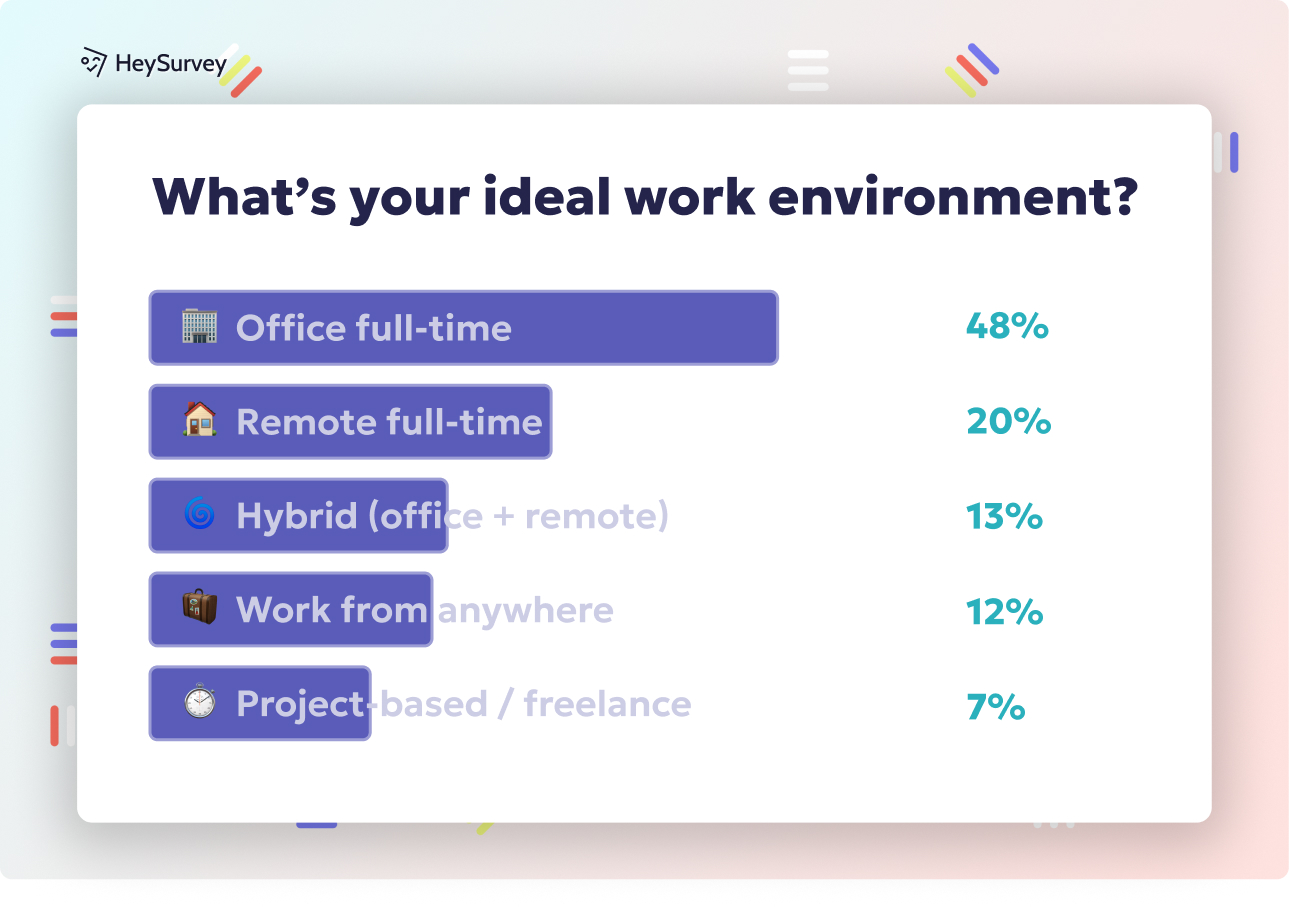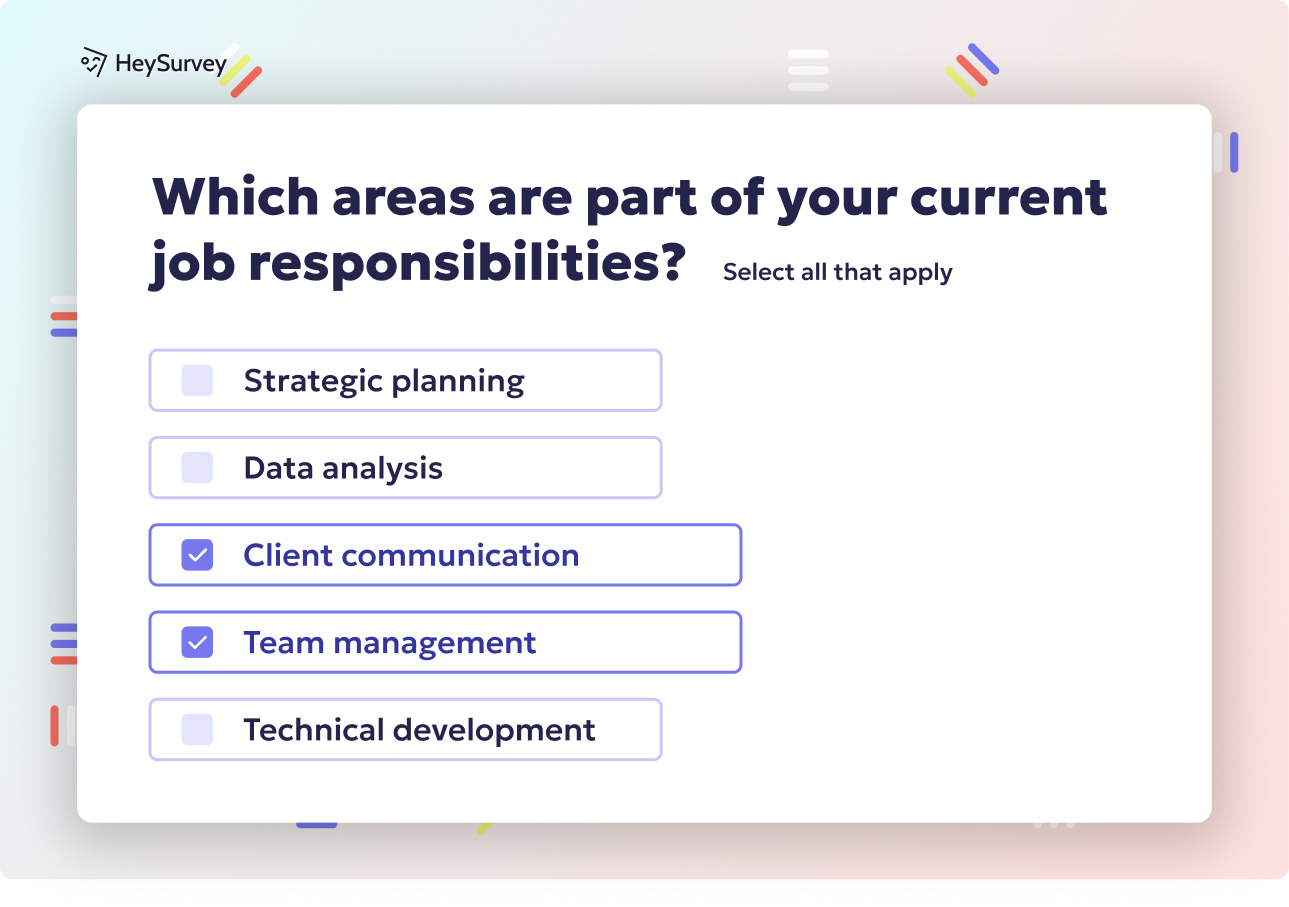29 Hybrid Working Survey Questions to Boost Employee Engagement
Discover 25+ hybrid working survey questions crafted to boost engagement, productivity, and culture in remote and in-office teams alike.
Hybrid work has become the new normal, redefining how organizations balance flexibility and productivity. Now more than ever, teams need insights that go deeper than basic pulse checks. Well-crafted hybrid working surveys are essential: they fuel better decision-making, help teams stay connected, and guide smarter workplace policies. Whether you’re redesigning your remote and in-office approach or just ran a hybrid pilot, this article will give you actionable survey types, ready-to-copy questions, and unbeatable tips for rolling out an effective hybrid employee feedback program from Day 1.
Employee Engagement Surveys for Hybrid Workers
How Engagement Drivers Shift in Hybrid Work
Traditional engagement surveys need a refresh when teams are spread across offices, kitchens, and coffee shops. In a hybrid model, feeling part of the big picture is harder—"out of sight, out of mind" becomes a real fear for remote workers. Engagement is now less about ping-pong tables and more about meaningful connection, equal access, and recognition in every setting.
Classic motivation factors like social bonding or impromptu brainstorming get tested when half your peers are faces on a screen. While some employees thrive with the new autonomy, others may feel unmoored if leadership’s mission feels remote (pun fully intended).
- Emphasizing digital inclusivity is crucial.
- Recognition must be location-agnostic.
- Opportunities for learning and advancement should be accessible to all—not just those who come in on Mondays.
Every team will have its own blend of hybrid engagement drivers, so tuning your surveys to this reality is a must.
When and Why to Use These Surveys
Employee engagement surveys should be your go-to during key cultural shifts: - When you roll out or iterate on hybrid work policies. - If your employee net promoter score (eNPS) suddenly drops and no one knows why. - Right before big organizational changes, or when you sense morale dipping during culture audits.
Deploying these hybrid-specific surveys helps you zero in on what employees need to feel connected and committed—so you’re not left guessing when the next wave of turnover hits.
Sample Questions for Hybrid Engagement
Ask clear, direct questions to spark honest insights:
How connected do you feel to our company’s mission while working remotely vs. on-site?
On a scale of 1–10, how motivated are you to go the extra mile in our current hybrid model?
How often do you receive recognition for your work regardless of location?
Do you feel you have equal growth opportunities whether remote or in-office?
What is one thing that would make you feel more engaged in our hybrid setup?
A few well-placed, hybrid-focused engagement survey questions can work wonders for spotting early warning signs.
A Gallup study found that exclusively remote and hybrid employees have significantly higher engagement levels than on-site workers. (gallup.com)
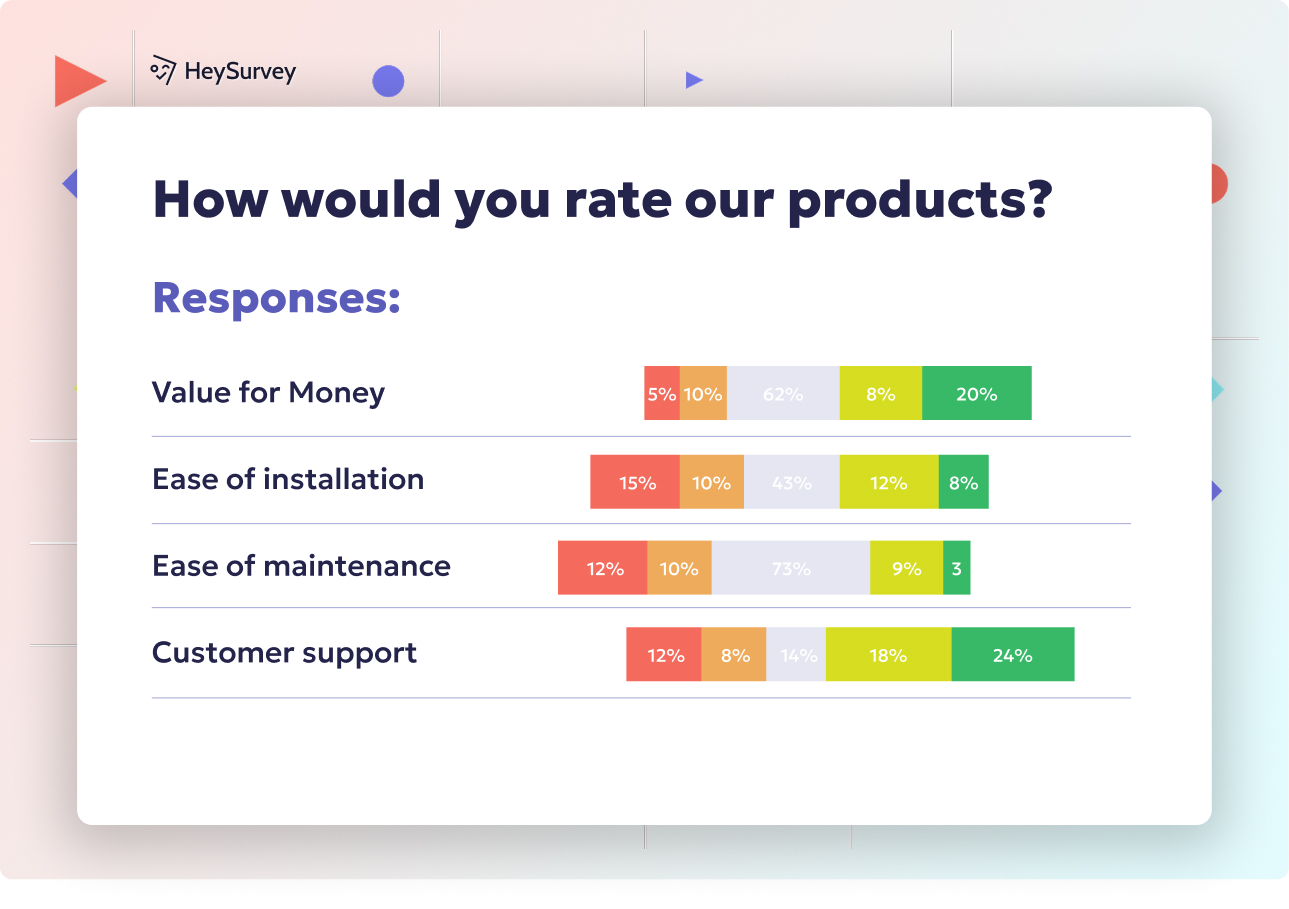
Creating your own hybrid working survey with HeySurvey is super simple—even if you’re new to the platform. Follow these three easy steps to get your survey up and running in no time. And stick around for some bonus tips that will make your survey shine like a pro!
Step 1: Create a New Survey
- Head to HeySurvey and log in or start without an account if you want to explore first.
- Hit “Create Survey” and choose how you want to start:
- Pick a template ready-made for hybrid employee feedback (perfect if you want a head start).
- Or create an empty sheet for full customization.
- Give your survey a name (something catchy like “Hybrid Work Feedback Q2”) so you can find it easily later.
This sets the stage for building a survey perfectly tailored to your team's vibe.
Step 2: Add Your Questions
- Click “Add Question” at the top or between existing ones.
- Select question types based on what you want to learn:
- Use Scale for motivation or productivity ratings.
- Use Choice for multiple-choice or single-choice questions.
- Use Text for open-ended feedback like “What would make you more engaged?”
- Type in your questions—copy and paste sample questions if you like, then tweak for your audience.
- Mark questions as required if you want to make sure everyone answers them.
- Feel free to add images or extra descriptions to make the survey more engaging.
This step lets you weave together your survey with all the right queries for hybrid work insights.
Step 3: Publish Your Survey
- Preview your survey by clicking “Preview” to check flow and design.
- When ready, hit “Publish”.
- Copy your unique survey link and share it via email, chat, or embed it on your intranet.
- Remember, publishing requires an account to collect and view responses.
Your survey is now live and ready to collect valuable insights about your hybrid workforce!
Bonus Step 1: Apply Branding
- In the Designer Sidebar, upload your company logo to make the survey feel official.
- Customize colors, fonts, and backgrounds to match your brand.
- Choose layouts and animations that create a smooth and inviting experience for respondents.
Branding adds a professional touch and helps boost participation.
Bonus Step 2: Define Settings
- Head to the Settings Panel to set start and end dates for your survey.
- Limit the number of responses if needed.
- Set a redirect URL if you want respondents to land on a thank-you page or company site after submitting.
- Enable or disable the option for respondents to view survey results (great for transparency).
Tweak these settings for precise control over your survey lifecycle and respondent experience.
Bonus Step 3: Use Branching to Personalize
- Add branching logic so questions change dynamically based on previous answers.
- For example, if someone reports low motivation, direct them to follow-up questions about challenges.
- This keeps surveys relevant and shows respondents you care about their specific experiences.
Branching makes your survey smart, responsive, and more enjoyable to complete.
With these pointers, you’re armed and ready to create an impactful hybrid working survey in HeySurvey that will capture honest, actionable feedback—without any fuss! Start now by opening a tailored hybrid working survey template below and watch the insights roll in.
Productivity & Performance Surveys in Hybrid Setups
What to Measure in Hybrid Productivity
Gone are the days when you could measure productivity by who stayed latest at their desk. In hybrid settings, productivity is about measuring actual output, clarity, and focus time—not office presence. It's about finding out if employees feel equipped to deliver and whether the working environment is boosting, or busting, their flow.
Some employees will find their stride at home, heads-down with minimal distractions, while others may crave the buzz of an office to fuel their best work. The right hybrid productivity survey helps decode: - How easily deadlines are met wherever staff are located. - Whether goals and performance metrics translate across locations. - If meetings are mission critical or just calendar clutter.
When and Why to Send Productivity Surveys
Use these surveys at key touchpoints, such as: - When you need to track progress against OKRs in a hybrid pilot. - After rolling out new workflow tools or project-tracking software. - If productivity seems sluggish, or teams report confusion about goals and priorities.
These surveys help uncover not just bottlenecks but also opportunities to fine-tune your hybrid structure for maximum output.
Example Productivity & Performance Survey Questions
Capture actionable feedback with these questions:
Rate your ability to meet deadlines while working remotely.
How clear are performance expectations when you alternate locations?
Which environment (home, office, third space) makes you most productive and why?
Do virtual meetings help or hinder your productivity?
What resources would boost your output in a hybrid model?
Questions like these ensure you’re measuring what matters—real-world results—everywhere your team gets their work done.
A study of 1,600 employees at Trip.com found that a hybrid work model (three days in the office, two at home) maintained performance and promotion rates while enhancing job satisfaction and retention. (ft.com)
Well-Being & Mental Health Surveys for Hybrid Employees
Addressing Well-Being in a Hybrid World
Stress and work-life balance don’t fade away just because sweatpants are now part of the dress code. In hybrid work, boundaries often blur: meetings bleed into dinner, and notifications ping long after “clock out.” On the flip side, isolation and feeling “off the radar” can quietly erode well-being.
Hybrid well-being surveys are crucial to: - Gauge workload sustainability when alternating locations. - Check if employees can really unplug after hours. - Track burnout risk and isolation—especially for those remote more often. - Spotlight areas where leadership or policy tweaks could reduce stress.
Simply put, proactive check-ins on well-being matter more as hybrid becomes a norm, not a novelty.
Why & When to Check On Well-Being
Don’t wait for the annual review. The best time for a well-being and mental health survey is: - At the close of a seasonal peak or big project cycle. - During or after important wellness initiatives. - As a standing item every quarter in your hybrid strategy.
Prompt, tailored check-ins help flag burnout risks before they become resignations or long-term leaves.
Sample Well-Being Questions for Hybrid Work
Ask about the realities of hybrid well-being:
How manageable is your workload when splitting time between home and office?
Do you feel you can disconnect after work hours in our hybrid arrangement?
How often do you experience feelings of isolation while working remotely?
Rate the adequacy of company-provided mental health resources.
What could we do to better support your well-being in a hybrid context?
Giving employees a way to voice stress and workload issues is essential—so listen up.
Communication & Collaboration Effectiveness Surveys
The Shift in Hybrid Communication
It’s easy for messages to get lost when half the team is around a conference table and others are in fuzzy Zoom windows. Effective communication is key in hybrid workplaces, not just for alignment but for genuine collaboration that crosses every boundary—digital, physical, or otherwise.
In hybrid setups, you need to know: - If meetings and information-sharing are inclusive of all. - Whether timely updates and project info reach everyone. - If certain channels or tools are more effective across locations.
This is where a targeted hybrid collaboration survey swoops in to save your team from endless “Did you get that email?” moments.
When to Use These Surveys
Deploy these right after: - Adopting new technologies like Slack, Teams, or virtual whiteboards. - Noticing project delays or breakdowns in coordination. - Changing meeting cadences or protocols.
Getting real about communication effectiveness helps avoid silent frustrations and keeps momentum strong.
Example Questions: Collaboration in a Hybrid World
Try these for size:
How effective are hybrid meetings (mix of in-person and virtual) for decision-making?
Do you receive timely updates regardless of your location?
How comfortable are you speaking up in video calls compared to in-office meetings?
Rate the clarity of communication from leadership about hybrid policies.
Which channels (Slack, email, Teams) work best for you, and why?
Clarity and accessibility should always trump channel overload—keep your finger on the pulse here.
A 2023 Deloitte survey found that hybrid workers often feel disconnected from on-site colleagues, leading to ineffective collaboration. (www2.deloitte.com)
Workspace & Environment Preference Surveys (Home vs. Office)
Understanding Workspace Needs
Ergonomics matter—your kitchen chair doesn’t care about your spine! When it comes to hybrid workspaces, preferences between home and office boil down to comfort, noise, tools, and even the dreaded commute. One size never fits all, and that’s exactly why organizations need surveys focused on environmental preferences.
A great hybrid workspace survey reveals: - Whether home setups meet health and productivity needs. - What drives employees to pick their location each day. - How office amenities or resources shape the work experience. - The impact of changes, like hotel-desk systems or office redesigns.
When & Why to Run Workspace Surveys
Collect feedback: - When considering a redesign or downsizing the office. - Before introducing new perks or stipends for home equipment. - Prior to changing policies around hot-desking or collaborative spaces.
These insights help you invest where it really matters and avoid costly mistakes—like fancy desks no one uses.
Sample Workspace Survey Questions
Ask these to reveal what environments really perform:
Do you have a dedicated, ergonomic workspace at home?
How often do you choose the office for collaborative tasks?
What factors influence your decision to work remotely on a given day?
Rate the adequacy of office resources (quiet zones, meeting rooms) for your needs.
What improvements would make either environment more appealing?
Optimizing workspace quality directly supports productivity—don’t leave anyone’s preferences on mute.
Technology, Tools & IT Support Surveys for Hybrid Teams
Checking Your Hybrid Tech Stack
Hybrid work relies on seamless tools, stable connections, and hassle-free IT support. If any one link in your digital chain breaks, whole teams can grind to a halt. That’s why it’s smart to evaluate your setup with tech and IT surveys built specifically for hybrid teams.
Focus on: - Internet reliability and hardware sufficiency for remote work. - Whether collaboration tools are helping or creating redundancy. - Accessibility and responsiveness of IT support, especially for off-site fixes. - Cybersecurity training and awareness in a distributed world.
You want tech to be your silent ally—not a daily pain point.
When & Why to Send Tech Surveys
Run these surveys: - After rolling out new tools or platforms, like Zoom, Teams, or a company VPN. - During annual IT budget planning so you address real needs (not just shiny new gadgets). - Any time your ticket queue spikes or you hear grumbling from remote staff.
The goal: fix issues before they snowball, and make sure investments pay off for everyone.
Key Technology & Support Survey Questions
Ask where it matters most:
How reliable is your internet connection when working remotely?
Do you have the necessary equipment (camera, headset, monitor) to work effectively?
Rate the responsiveness of IT support while off-site.
Which collaboration tools feel redundant or unnecessary?
Have you received adequate training on data security in a hybrid model?
Staying ahead of tech headaches keeps hybrid teams humming—not just surviving.
Management & Leadership Support Surveys in a Hybrid Context
The Changing Face of Leadership
Remote work redefines what good management looks like. Visibility, fairness, and frequent feedback are all up for reevaluation in the hybrid world—office “face time” is no longer a stand-in for strong leadership.
You need to know: - If managers are accessible and supportive wherever employees work. - Whether feedback, coaching, and promotions feel equally distributed. - How well leaders are communicating company priorities, especially across locations.
A targeted survey builds the blueprint for fair and effective hybrid leadership—without relying on guesswork.
When to Use Leadership Support Surveys
Roll these out: - Right after management upskilling or leadership trainings. - During regular performance cycles. - When rumors of favoritism crop up, or you want fair play to be more than a buzzword.
Checking in on manager support in hybrid settings ensures no team member is left in the dark.
Sample Questions for Management & Leadership in Hybrid Work
Spot issues with these:
How accessible is your manager when you work remotely?
Do you receive regular feedback regardless of location?
Rate the fairness of task allocation between remote and on-site teammates.
How effectively does leadership communicate strategic goals in a hybrid environment?
What could managers do differently to support you?
Empowering managers to lead inclusively guarantees hybrid policies aren’t just paper promises.
Company Culture & Inclusion Surveys amid Hybrid Work
Nurturing Culture Across Distances
A vibrant, inclusive company culture can go fuzzy around the edges when employees trade hallways for home offices. Culture isn’t just about company hoodies anymore—it’s about building belonging and equity, regardless of where your badge gets scanned.
Culture and inclusion surveys should examine: - Whether remote staff feel as included as those on-site. - How easy it is to participate in social or informal interactions. - If your hybrid model supports versus undermines inclusion.
Spotting proximity bias is key, too—unintentional favoritism towards on-site workers can quietly damage trust.
When to Use Culture & Inclusion Surveys
Pulse your teams: - After launching new DEI initiatives. - During culture revamps or refreshes. - When noticing higher-than-average turnover or engagement dips.
In a hybrid setup, intentional efforts to strengthen belonging are not optional—they’re essential.
Questions for Hybrid Company Culture & Inclusion
Uncover “hidden truths” with these:
Do you feel equally included in team decisions when dialing in virtually?
How often do you participate in informal social interactions with colleagues?
Rate the extent to which our hybrid model promotes inclusion.
Have you experienced proximity bias (favoring in-office staff)?
What cultural rituals could strengthen belonging for hybrid employees?
Shaping a culture of belonging means actively ensuring everyone has a seat at the virtual table.
Best Practices & Common Pitfalls: Dos and Don’ts for Hybrid Working Surveys
Dos: Hybrid Survey Success Factors
Being strategic with hybrid surveys makes all the difference. Always:
- Keep surveys short—aim for 10–15 targeted questions.
- Ensure anonymity so people speak up about real pain points.
- Segment and analyze results by location (remote, office, hybrid).
- Close the feedback loop quickly—report back and outline next steps.
Technical edge points: - Use mobile-optimized forms so employees can participate from anywhere. - Rely on clear, consistent rating scales to make answers easy. - Pilot your survey with a small group—invaluable for catching confusing questions.
Don’ts: Survey Blunders to Avoid
Don’t drop the ball: - Avoid leading questions that tilt responses. - Never ignore the unique needs of remote staff. - Don’t over-survey—survey fatigue is real! - Never delay sharing results or acting on feedback—speed matters.
Poorly executed surveys can breed cynicism, while thoughtful survey design earns real trust.
By paying attention to survey best practices for hybrid working, you ensure your efforts yield genuine insights and actionable improvements, not just data for data’s sake.
Conclusion
Rolling out smart, targeted hybrid working surveys leads to happier, more productive teams—wherever they log in. The key is asking the right questions at the right moments and acting fast on what you hear. With these ready-made survey examples and best practices, you’re on your way to optimizing engagement, performance, and culture in a hybrid-first world. Now is the time to get feedback that truly fuels your future of work. Put your teams' voices at the heart of your hybrid journey!
Related Employee Survey Surveys

29 Essential Post Mortem Survey Questions for Project Success
Discover 25+ essential post mortem survey questions to improve projects, boost team morale, and d...
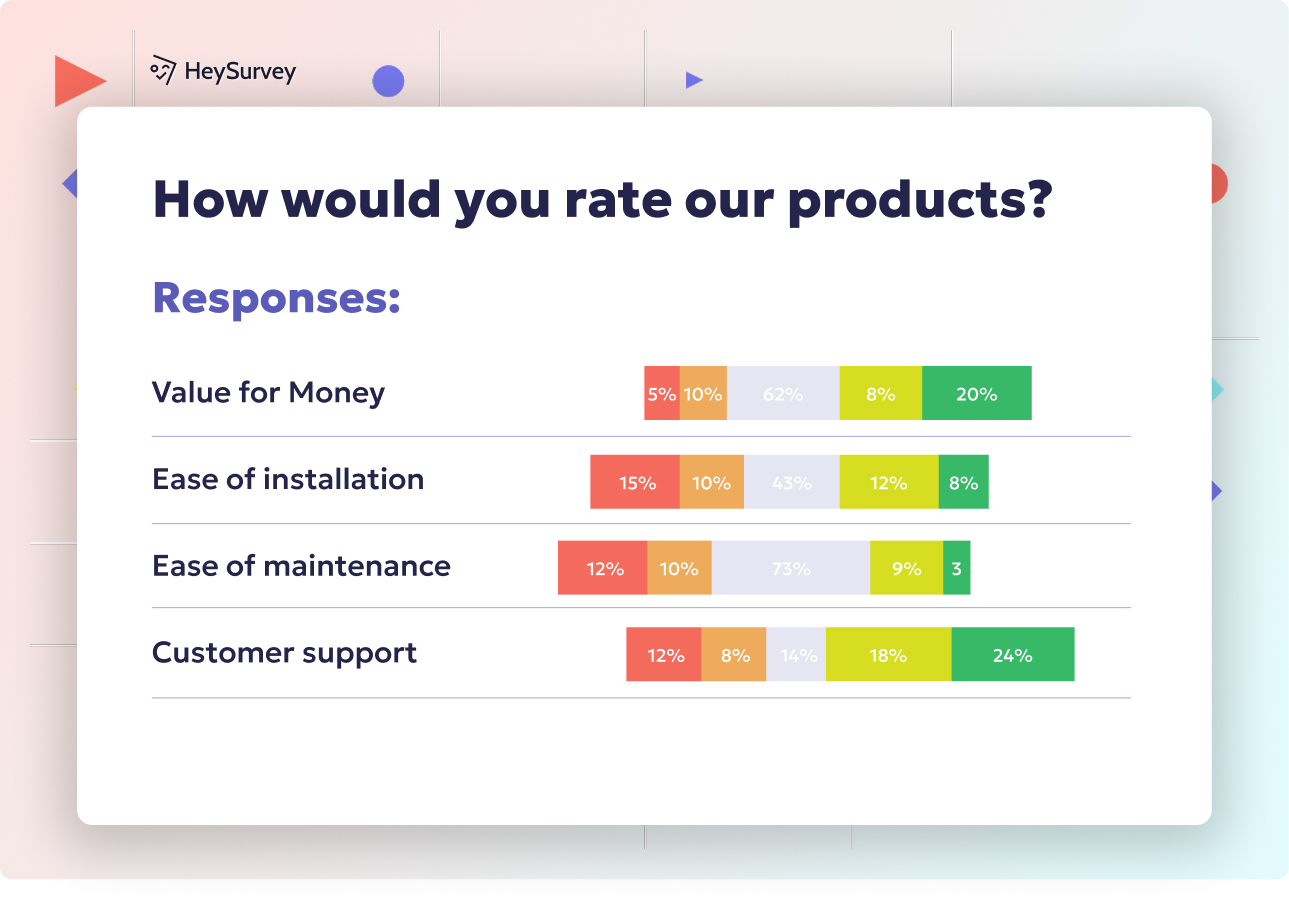
31 Change Readiness Survey Questions to Boost Your Success
Discover 25+ sample change readiness survey questions to assess attitudes, barriers, and confiden...
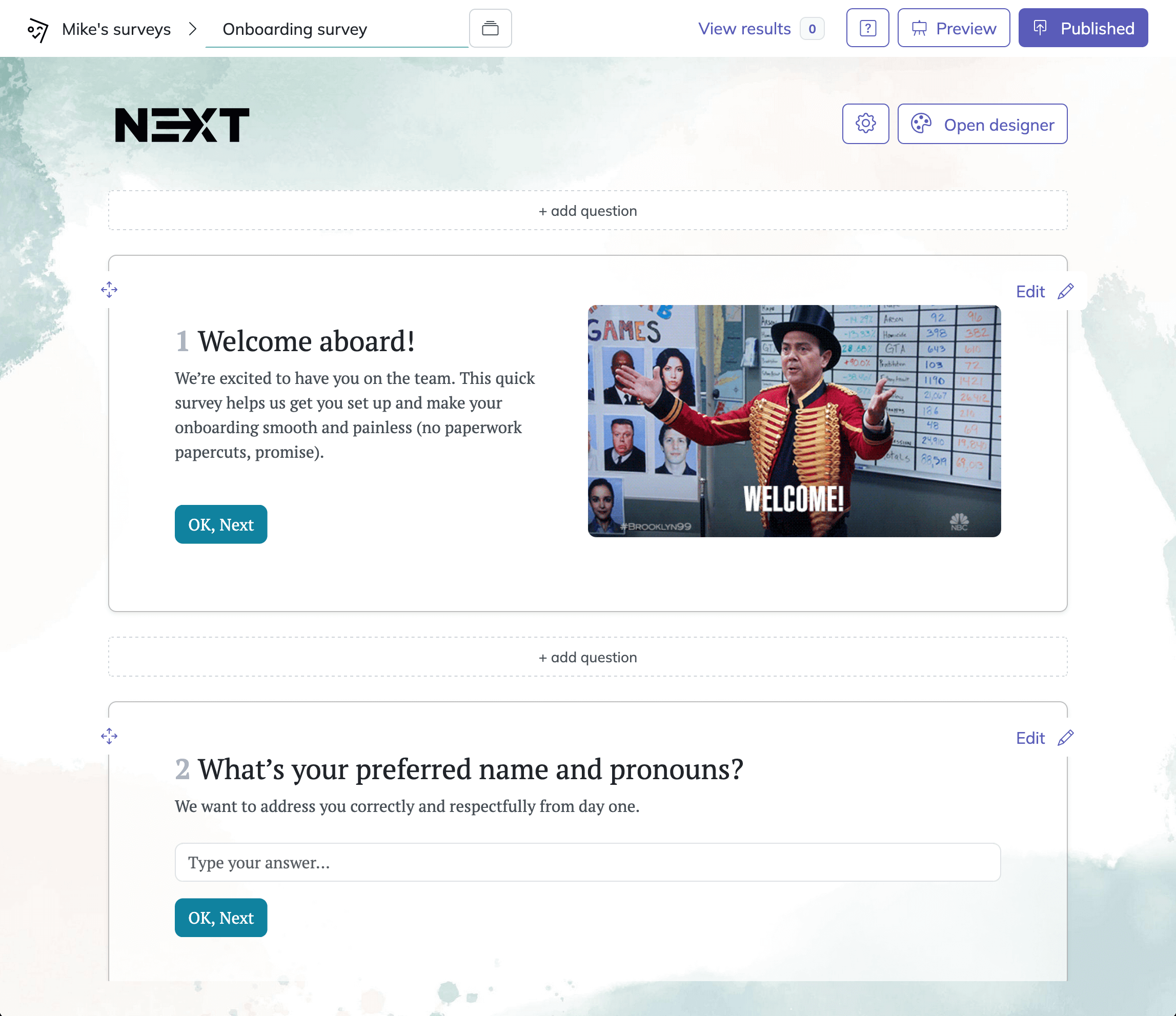
31 Retreat Survey Questions to Collect Actionable Feedback
Discover 26 essential retreat survey questions to gather actionable feedback before, during, and ...
